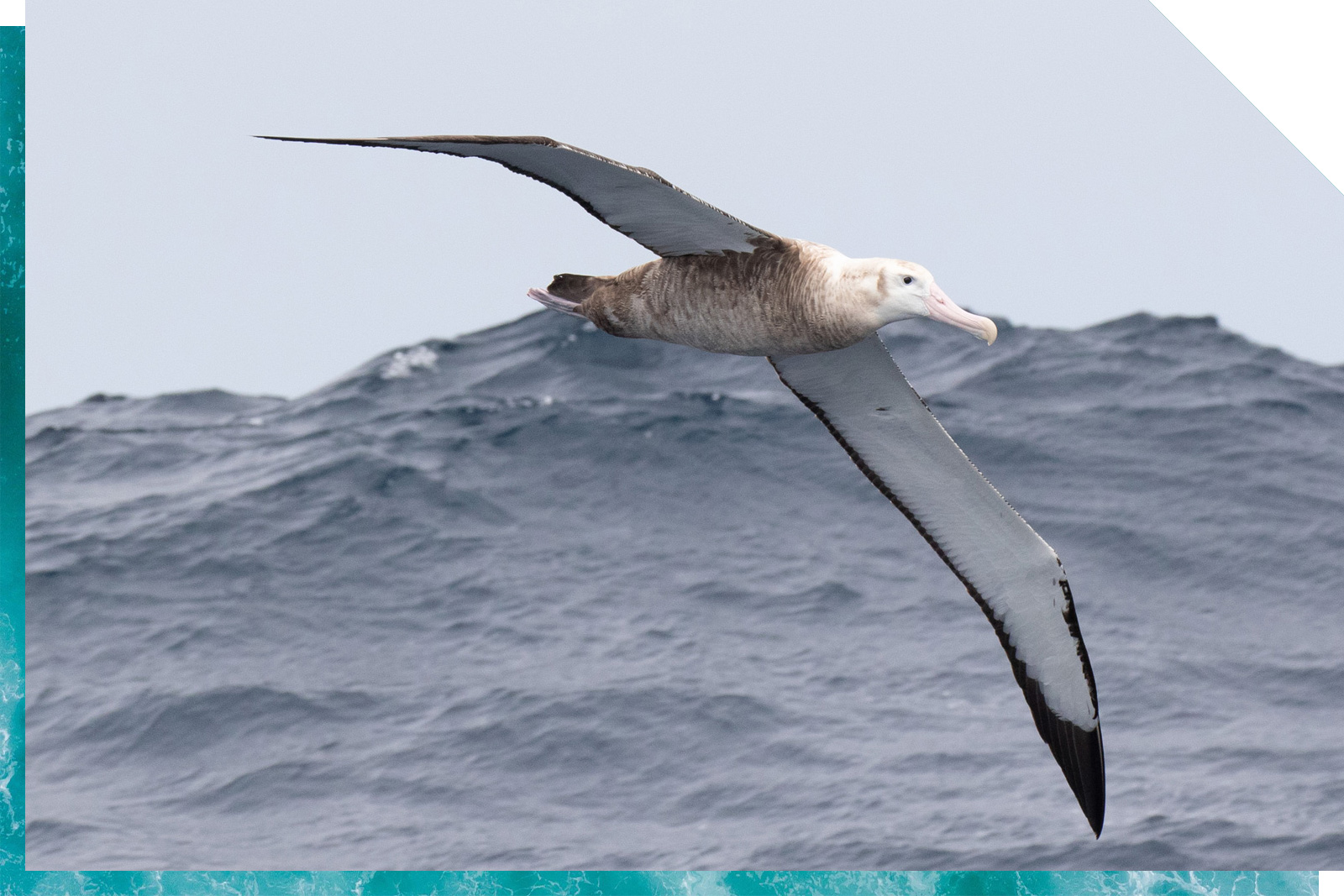TAKING FLIGHT
ON 3D WINGS
To celebrate World Albatross Day, we collaborated with Science Alive Mātauranga, Taylormade Media and a host of others to connect New Zealanders to the story of the incredible Antipodean albatross and the dangers it faces at sea.
Watch the video and find out more below.
THANK YOU
TO A SPECIAL GROUP
A very special group came together to tell this important story for Aotearoa New Zealand. They showed us what the power of a shared ambition can achieve at lightning speed. Thank you.
Funded by Science Alive Mātauranga / Made by Taylormade Media for Live Ocean / Writer/Director – Brendan Donovan / Editor – Sarah Grohnert / Animators – Ken Gorrie, Mark McQuillan, Sarah Dolby, Ben Sharpe, Aleeza Stettner / Cinematographer – Ian McCarroll / Producers – Ian Taylor, Tess Whelan / Presenters – Blair Tuke, Peter Burling, Noenoe Barclay-Kerr / Narrator – Manawanui Maniapoto Mills / Footage courtesy of The Ocean Race, James Reardon/Last Planet Ltd, Finlay Cox, Dr Graeme Elliott, Dr Kath Walker, NHNZ, Heritage Expeditions, James Muir, Encounter Kaikoura, The Nature Conservancy, Charlie Barnett, Otto Whitehead, Project Tamar/Pró-Tamar Foundation / Music credits – “Shallow Water” (ft Yehezkel Raz), Artist: Sivan Talmor, Album: Vol.1 – Underwater Fantasies / “Up to the sky”, Artist: Roman P, Album: Planet Legacy / “Heritage”, Artist: Ben Winwood, Album: Selah

Photo Credit – Jodi Osgood-Webber
THE RACE TO SAVE
THE ANTIPODEAN ALBATROSS
These birds are New Zealanders. They breed on our Antipodes Islands and the Pacific and Tasman Seas are their home range. Albatrosses and other seabirds are ship followers and are accidentally caught when longlines are being set by commercial fishing vessels. It is thought climate change is driving the albatrosses to feed in more northern waters where large fishing fleets are concentrated.
Since 2004, we’ve lost 60% of our breeding pairs. The population is in freefall and unless we act immediately we could lose this incredible bird.
Live Ocean and Southern Seabird Solutions Trust are working with the Department of Conservation to assist their long term monitoring and tracking programme. Our generous donors have raised funds for GPS satellite trackers that show where the albatrosses are feeding and this information is then overlaid with Global Fishing Watch data to identify the fishing fleets they encounter while they are at sea. Once New Zealand knows which fleets are causing the risk, conversations can begin with the governments and fishing companies.
WE NEED
A SHARED AMBITION
There are proven solutions which include setting fishing lines at night, adding weights near each hook, and using a bird scaring line. This is a global issue and New Zealand’s fleets can set an example for the world.
Here’s what you can do to help:
1. Network. Share the video. Tell everyone.
2. Get informed. Contact your country’s fisheries administration, tuna longline companies or your local environmental org. Find out what albatross safe techniques your national fleets are using.
3. Donate. Help build a world where fishing fleets are using albatross-safe techniques.
“As a country we need to turn this around. That means continuing to collect data on where the birds are dying and being prepared to act on it so we’re not tracking these birds to extinction. We can’t be the first country in the world to lose an albatross species. That’s not a race New Zealand should win.”
BLAIR TUKE
GET ON BOARD
We know it takes the right team to achieve a massive goal. We want Kiwis to come around this big, ambitious vision and put their shoulder to it. We also know having fun is an important part of any mission. Being an ocean lover isn’t enough anymore, we need to be ocean champions.
Join us. Be part of Live Ocean.
General Enquiries: [email protected] | Media Enquiries: [email protected]
© Live Ocean Charitable Trust | NZ Charity ID CC57006
Website by Fuel Media | Terms & Conditions | Privacy Policy
General Enquiries: [email protected]
Media Enquiries: [email protected]
© Live Ocean | NZ Charity ID CC57006
Privacy Policy | Terms and Conditions
Website by Fuel Media
